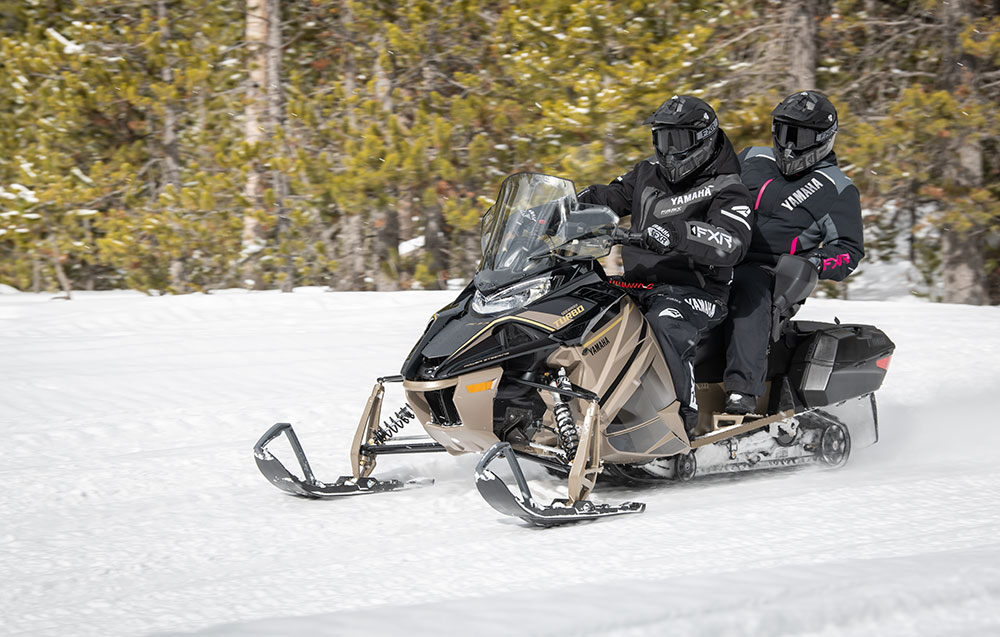By Chris Reid
Electric Power Steering (EPS) is a great feature on any vehicle – improving the overall experience by increasing rider comfort, control and confidence, while reducing fatigue. The first manufacturer to offer EPS on a snowmobile, Yamaha’s velocity sensing system delivered maximum assistance at slow speeds to nearly zero assistance at higher speeds.
For 2023, Yamaha expands its electronic power steering system to additional models, rewriting the definition of a top, trail performance snowmobile. Variable Assist EPS takes the fight out of muscling the powerful turbo through twisty trails, but it doesn't stop there. It also isolates the rider from unwanted handlebar resistance fed back through the mechanical steering system due to inconsistencies in the trail. The resulting light steering effort and handling precision is unrivaled for long days in the saddle.

Yamaha pioneered this innovative technology in 2011. The newest generation has reduced weight by over three pounds and incorporates a brushless DC motor. No brushes to wear out means greater reliability and much better thermal performance or ability to maintain full output power for longer periods of time.
Variable Assist EPS utilizes a magnetic torque sensor to measure steering input based on torsion or “twist” of the steering post resulting from handlebar input and ski resistance. The contactless, magnetic torque sensor supplies this data to an integrated control module, which then signals the brushless servo-motor to assist the steering through its powered, worm-gear drive assembly.
The system also provides engine RPM and vehicle speed data to the control module, which calibrates for increased assistance at lower speeds then tapers off as the vehicle accelerates. This provides a more balanced, natural feel or connection to the terrain.

When the skis encounter an abrupt force that works against the steering input, the torque sensor alerts the control module to apply additional assistance to counteract or “resist” the negative input. This effectively reduces the steering effort required while enhancing predictability for greater rider confidence and less fatigue.
So how does this technology really translate to the rider? At first, it’s a “lightweight” feeling with low steering effort when pulling on the bars. With more saddle time, the improved steering precision becomes more apparent as the sled holds its line better through choppy corners. The need for counter-steer or correction is reduced as the rider is isolated from trail inconsistencies deflecting the skis, giving a smooth ride not found in traditional sleds. Less shoulder and arm movement reduces muscle strain – and dramatically increases enjoyment, particularly over a multi-hour ride. As the miles click by, confidence builds as the rider learns to trust the ability of the sled to change line with minimal steering input.

Snowmobile calibration at the factory is a balancing act at best, where compromises are made between handling performance and rider comfort. When traction products are added to a snowmobile, like studs and more aggressive carbides, the balance of handling to comfort is most often lost. EPS changes all this with its ability to adjust to changes in traction without increasing steering effort.
But Snowmobile EPS systems go far beyond reducing steering effort. It changes the character of the sled in virtually all conditions. It is not simply assisting the turning of the handlebar. It is controlling the resistance at the skis and constantly calibrating the steering system. Linear steering effort, consistent handling, accuracy and smoothness all add up to deliver a great ride.


 All Yamaha News
All Yamaha News